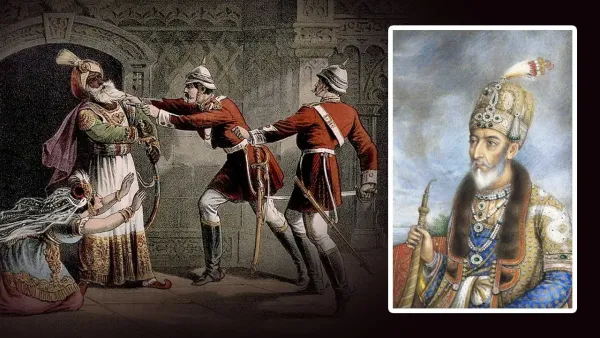

The Red Fort of Delhi with the Mughals has many freedom related stories inside it.
The Red Fort of Delhi is not only the pride and pride of the Mughal rule, but the precious heritage of Indian history and culture. This stories of independence of India are also included in their chest, so the symbol of freedom is also a witness to the pride of freedom day. On Independence Day, the tricolor is proudly hoisted at the Red Fort. Let us know how the Red Fort became a part of freedom stories?
The Red Fort was built by the Mughal emperor Shah Jahan in the 17th century. Its old name was Kila-e-Mubarak. This fort, built in a decade, was a symbol of the power and grandeur of the emperor. This unique specimen of Mughal architecture shows a mixture of Persian, Taimuri as well as Hindu styles.
The most important thing is that this fort was originally made of white color. Then the walls of this fort and many other parts were built of white lime and marble, which led to the shiny white fort. When the fifth Mughal Emperor Shah Jahan made Shahjahanabad his capital, this fort was settled as the Mughalia palace complex.
In 1857, when dissatisfaction spread among Indian soldiers against the British East India Company and after that the first freedom struggle was started, this was finally made the center of this rebellion. The revolutionaries had sought support from the last Mughal Emperor Bahadur Shah Zafar in this fort. Actually, in view of the rebellion of Indian soldiers, the British soldiers started running towards Delhi. The rebels also followed him.

The revolutionaries had sought support from the last Mughal Emperor Bahadur Shah Zafar in this fort.
The rebels, who arrived in Delhi, urged the Mughal Emperor Bahadur Shah Zafar to lead the rebellion. Also declared him his king. Finally Bahadur Shah Zafar accepted his request and declared himself independent of the British. However, the rebels lost in the war with the East India Company and the company was captured back to Delhi.
The British tried to destroy the fort and loot. Bahadur Shah Zafar ran away and went to Humayun's tomb. Then surrendered. The British prosecuted and declared them guilty and sent them to Burma after sitting on a bullock cart. His two sons and a grandson were killed. Despite this, this fort became a symbol of unity of Indians.

The British carried out all the massacres to suppress the voices against them. Photo: Getty Images
After the first freedom struggle, the British took possession of the fort, they took care of it in their own way. After the passage of time, white lime walls started deteriorating. Due to this, the British repaired this fort in the 19th-20th century. Colored the fort walls with red. This protected the fort and due to the red sandstone, it became famous as the Red Fort.

After a long battle with the British, when the country became independent on 15 August 1947, the Red Fort once again became a symbol of India's independence and pride. After the declaration of independence, the British flag was launched after a long time from the ramparts of this Red Fort. For the first time, the first Prime Minister of the country Pandit Jawaharlal Nehru hoisted the national flag tricolor from the ramparts of this Red Fort and with this the independence of India started. Since then it has been seen as the stories of freedom and the center of power.
Since then every year on August 15, the Prime Minister of India hoists the tricolor from the ramparts of the Red Fort and addresses the country. They tell the achievements of their country and keep the future account in front of the country. It is here that there are colorful ceremonies related to freedom day.

Now the Red Fort does not only have historical significance, but the huge ramparts and Diwan-e-Aam suit this fort for national celebrations. That is why the parade starts from Rashtrapati Bhavan on Republic Day and ends at the Red Fort itself. Presently, the Red Fort has become a popular tourist destination of the country with describing stories of Indian freedom. Today it has become a symbol of freedom and sovereignty of the country. In 2007, UNESCO included it in the list of its World Heritage.

The court hall of the Red Fort was called Diwan-e-Aam, where the Mughal emperors met the people during their rule and discussed public issues. Apart from this, Diwan-e-Khas was a private court hall, where the emperor used to meet special guests and courtiers. There was a palace in this fort for royal women, which was called Rang Mahal.
The garden of the Red Fort, settled in the Charbagh style of Mughal architecture, was known as Hayat Baksh Bagh. The white marble mosque built in the 17th century is also in the fort, which was called Moti Masjid. Today these are the center of attraction of all the tourists. Apart from these, many museums have been built in this fort, in which historical artifacts, weapons, pictures and other items are kept.
These museums have Subhash Chandra Bose Museum, Yaad-e-Jalians and Museums associated with the freedom struggle of 1857. Now every evening there is a light and sound show in the Red Fort, in which the history and architecture of the Red Fort is shown.